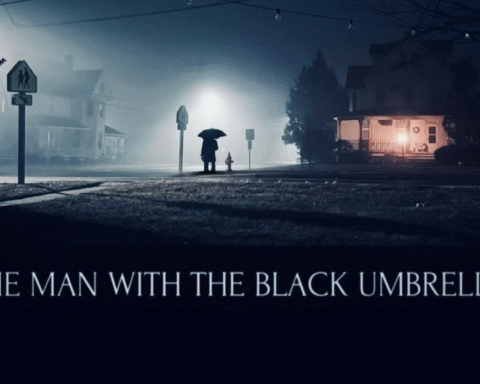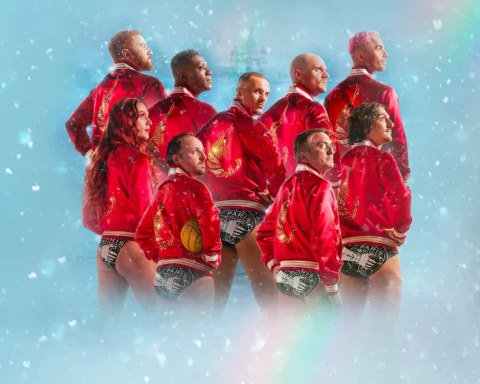Since its debut in 2001, the Fast & Furious franchise has grown from a modest street racing film into a global phenomenon, spanning ten films, a spin-off, and numerous other media adaptations. With its blend of high-octane action, exotic cars, and a diverse cast, the series has captured the hearts of millions worldwide. However, beyond the thrilling car chases and explosive action sequences, the franchise has also become a cultural touchstone, exploring themes of family, friendship, and morality. This article delves into each movie in the series, offering an in-depth analysis of their narratives, characters, and thematic significance. We will also explore how the franchise has evolved over time, both in terms of its storytelling and its impact on popular culture.

The Fast and the Furious (2001)
Plot Summary
The original The Fast and the Furious introduces us to Dominic Toretto (Vin Diesel), a skilled street racer with a deep passion for cars, and Brian O’Conner (Paul Walker), an undercover LAPD officer. Brian is tasked with infiltrating Dom’s crew, who are suspected of being involved in a series of high-speed truck hijackings. As Brian becomes more immersed in the world of street racing and forms bonds with Dom’s family, particularly his sister Mia (Jordana Brewster), his loyalty begins to waver. The film culminates in a final race between Brian and Dom, where Brian allows Dom to escape, signifying his shift in loyalty from law enforcement to the Toretto family.
Analysis
The first film in the series lays the groundwork for the central themes that would come to define the franchise: family, loyalty, and the moral ambiguity of the characters’ actions. Dom’s crew is not just a group of street racers; they are a family bound by shared experiences and a code of honor. Brian’s internal conflict between his duty as a cop and his growing attachment to Dom’s family sets the stage for the series’ exploration of loyalty and morality. The film’s focus on the underground world of street racing also introduced audiences to a subculture that had rarely been depicted in mainstream cinema.
Themes: Family, Loyalty, and Moral Ambiguity
In The Fast and the Furious, family is portrayed as a chosen bond, rather than a biological one. Dom’s crew operates with a code that values trust, loyalty, and mutual respect, echoing the traditional ideals of a family unit. This idea of family as something more than blood relations would become a cornerstone of the franchise, driving many of the characters’ motivations and decisions in subsequent films. Brian’s dilemma—his struggle to reconcile his duty with his growing sense of belonging within Dom’s “family”—highlights the theme of loyalty, which often supersedes the characters’ moral obligations.

2 Fast 2 Furious (2003)
Plot Summary
In 2 Fast 2 Furious, Brian O’Conner, now a fugitive after allowing Dom to escape, has relocated to Miami. He becomes involved in illegal street racing once again but is soon captured by the authorities. To avoid prison, Brian agrees to go undercover to bring down a drug lord named Carter Verone (Cole Hauser). He recruits his childhood friend Roman Pearce (Tyrese Gibson) as his partner, and together they infiltrate Verone’s operation. The film concludes with Brian and Roman successfully bringing down Verone, while also securing their freedom.
Analysis
2 Fast 2 Furious expands on the themes introduced in the first film while also bringing in new elements. The introduction of Roman Pearce as Brian’s partner adds a layer of complexity to the narrative, particularly in terms of exploring the theme of friendship. Roman and Brian’s relationship is strained by past grievances, but over the course of the film, they reconcile and reforge their bond. The film also continues to explore the idea of loyalty, as Brian once again finds himself caught between his duties as a law enforcement agent and his personal connections.
Themes: Friendship, Redemption, and Trust
Friendship takes center stage in 2 Fast 2 Furious, as Brian and Roman’s relationship evolves from one of distrust to one of mutual respect and camaraderie. Their dynamic adds depth to the film, highlighting the importance of forgiveness and trust in maintaining strong friendships. The theme of redemption is also prominent, as both Brian and Roman are given a chance to atone for their past mistakes by taking down Verone. Their successful mission not only secures their freedom but also allows them to reclaim a sense of honor and integrity.

The Fast and the Furious: Tokyo Drift (2006)
Plot Summary
The Fast and the Furious: Tokyo Drift takes the franchise in a new direction, focusing on a completely different set of characters. The film follows Sean Boswell (Lucas Black), a troubled teenager who is sent to live with his father in Tokyo after a series of run-ins with the law in the United States. In Tokyo, Sean becomes involved in the underground world of drift racing and befriends Twinkie (Bow Wow) and Han Lue (Sung Kang). Sean’s rivalry with Takashi (Brian Tee), a local drift king with ties to the Yakuza, drives much of the film’s conflict. The movie concludes with Sean defeating Takashi in a final race, earning respect and a place in the drifting community.
Analysis
While Tokyo Drift initially appears disconnected from the main storyline of the franchise, it introduces key elements that would become important in later films, particularly the character of Han. The film’s exploration of Japanese car culture and drift racing provides a fresh perspective on the world of street racing, showcasing a different style and philosophy compared to the previous films. The film’s emphasis on the idea of finding one’s place in a new environment ties into the broader theme of family, as Sean gradually builds his own community in Tokyo.
Themes: Identity, Belonging, and Cultural Exchange
Tokyo Drift explores the theme of identity, as Sean struggles to find his place in a foreign land. His journey reflects the broader experience of cultural exchange, as he learns to adapt to and eventually embrace the Japanese way of life. The film also touches on the theme of belonging, as Sean’s involvement in the drifting community allows him to form meaningful connections and establish a sense of purpose. Han’s mentorship of Sean reinforces the idea that family can be found in unexpected places, and that shared passions can bring people together across cultural boundaries.




Fast & Furious (2009)
Plot Summary
The fourth installment, Fast & Furious, marks a return to the original cast and storyline. The film opens with Dom and his crew hijacking fuel tankers in the Dominican Republic. However, Dom disbands the crew after learning that the authorities are closing in on them. Shortly after, Dom’s girlfriend, Letty (Michelle Rodriguez), is killed under mysterious circumstances. Dom returns to Los Angeles to investigate her death and crosses paths with Brian O’Conner, who is now working for the FBI. The two reluctantly team up to take down a drug lord named Arturo Braga (John Ortiz), who is responsible for Letty’s death. The film ends with Dom being arrested by the FBI, but Brian and Mia orchestrate a daring rescue as Dom is being transported to prison.
Analysis
Fast & Furious serves as a pivotal moment in the franchise, as it re-establishes the core group of characters and sets the stage for the more elaborate and action-packed storylines that would follow. The film’s darker tone and focus on revenge and justice distinguish it from the lighter, more playful tone of its predecessors. Dom’s quest to avenge Letty’s death and Brian’s internal conflict between his duty and his loyalty to Dom add emotional weight to the narrative, deepening the characters’ relationships and motivations.
Themes: Vengeance, Justice, and Loyalty
The themes of vengeance and justice are central to Fast & Furious, as Dom’s desire to avenge Letty’s death drives much of the plot. The film portrays vengeance as a powerful motivator, but it also emphasizes the importance of justice—Dom’s ultimate goal is not just to exact revenge, but to hold those responsible accountable for their actions. Loyalty remains a key theme as well, with Brian once again choosing to side with Dom over his law enforcement duties. This decision highlights the deep bond between the two characters, a bond that transcends the traditional boundaries of right and wrong.

Fast Five (2011)
Plot Summary
Fast Five takes the franchise to new heights, both in terms of scale and ambition. The film begins with Brian, Mia, and Dom on the run from the law after their daring escape at the end of the previous film. They seek refuge in Rio de Janeiro, where they plan one last job to secure their freedom. The target is a corrupt businessman named Hernan Reyes (Joaquim de Almeida), who controls much of Rio’s criminal underworld. To pull off the heist, Dom and Brian assemble a team of their old friends, including Roman, Tej (Ludacris), Han, and Gisele (Gal Gadot). The film introduces Luke Hobbs (Dwayne Johnson), a relentless DSS agent tasked with bringing Dom and his crew to justice. The film culminates in an epic heist, where Dom and Brian steal a vault filled with $100 million, securing their freedom and setting the stage for future adventures.
Analysis
Fast Five is often regarded as the turning point in the franchise, as it marks the shift from street racing to larger-scale heist and action-adventure narratives. The film’s ensemble cast and elaborate action sequences set the standard for future installments, while also reinforcing the franchise’s central themes of family and loyalty. The introduction of Hobbs adds a new dynamic to the series, as his initial antagonism towards Dom’s crew gradually evolves into mutual respect and eventual alliance.
Themes: Teamwork, Brotherhood, and Freedom
Teamwork is a central theme in Fast Five, as the success of the heist depends on the crew’s ability to work together and trust one another. Each member of the team brings their unique skills to the table, and their collaboration reflects the idea that family is not just about blood relations, but about shared experiences and mutual support. The theme of brotherhood is also prominent, particularly in the relationship between Dom and Brian, whose bond is tested but ultimately strengthened by their shared trials. Finally, the film explores the theme of freedom, as the crew’s heist represents their last chance to escape their past lives and start anew.

Fast & Furious 6 (2013)
Plot Summary
Fast & Furious 6 picks up where Fast Five left off, with Dom and his crew enjoying their newfound wealth and freedom. However, their peaceful lives are interrupted when Hobbs tracks them down with an offer: help him take down a dangerous mercenary named Owen Shaw (Luke Evans), and they will receive full pardons for their past crimes. The offer is made even more compelling when Hobbs reveals that Letty, who was presumed dead, is alive and working with Shaw. Dom and his crew accept the mission, leading to a globe-trotting adventure filled with high-octane action and personal revelations. The film culminates in a dramatic showdown on a runway, where the crew takes down Shaw’s team and rescues Letty. The film ends with the crew returning to Los Angeles, finally able to live their lives free from the shadow of their past.
Analysis
Fast & Furious 6 continues the franchise’s evolution into a full-fledged action-adventure series, with even more elaborate set pieces and a focus on international intrigue. The film also deepens the emotional stakes by bringing Letty back into the fold, exploring her amnesia and her complicated relationship with Dom. The return to Los Angeles at the end of the film serves as a symbolic homecoming, reinforcing the idea that, despite their global adventures, the crew’s true home is with each other.
Themes: Family Reunion, Identity, and Redemption
Family reunion is a key theme in Fast & Furious 6, as the film revolves around Dom’s quest to bring Letty back into the family. Letty’s amnesia adds a layer of complexity to the narrative, as she struggles to reconcile her past with her present identity. This theme of identity is further explored through the characters’ reflections on how their lives have changed since their early days as street racers. The theme of redemption is also prominent, as the crew’s mission to take down Shaw is motivated not just by the promise of pardons, but by a desire to atone for their past actions and secure a better future.

Furious 7 (2015)
Plot Summary
Furious 7 is one of the most emotionally charged entries in the franchise, due in large part to the untimely death of Paul Walker during production. The film opens with Deckard Shaw (Jason Statham), Owen Shaw’s older brother, seeking revenge on Dom and his crew for putting Owen in a coma. After killing Han in Tokyo (tying the events of Tokyo Drift into the main timeline), Deckard begins targeting the rest of the crew. Meanwhile, Dom and his team are recruited by a covert government agency led by Mr. Nobody (Kurt Russell) to retrieve a powerful hacking device known as God’s Eye. In exchange, they will receive the resources needed to take down Deckard. The film culminates in a series of intense action sequences, including a memorable battle in the streets of Los Angeles. The film ends with a heartfelt tribute to Paul Walker, as Brian retires from the dangerous life to focus on his family.
Analysis
Furious 7 is notable for its blend of action and emotion, as the film not only delivers the high-stakes thrills the franchise is known for but also serves as a touching farewell to Paul Walker’s character, Brian O’Conner. The film’s exploration of grief, loss, and moving on adds a layer of poignancy to the narrative, making it one of the most resonant entries in the series. The action sequences are bigger and more ambitious than ever, reflecting the franchise’s continued evolution into a global blockbuster.
Themes: Legacy, Grief, and Moving On
Legacy is a central theme in Furious 7, both in terms of the characters’ actions and the real-life impact of Paul Walker’s death. The film explores how the characters cope with loss and the ways in which they honor the memory of those they have lost. Brian’s decision to retire and focus on his family underscores the theme of moving on, as the characters begin to shift their priorities from adventure and danger to stability and family life. The film’s final scene, where Dom and Brian part ways at a crossroads, serves as a powerful metaphor for the different paths their lives have taken.

The Fate of the Furious (2017)
Plot Summary
In The Fate of the Furious, the franchise takes a darker turn as Dom seemingly betrays his family by siding with a cyberterrorist named Cipher (Charlize Theron). The crew is shocked by Dom’s actions and must figure out how to stop Cipher while also trying to bring Dom back to their side. As the story unfolds, it is revealed that Cipher is holding Dom’s former lover, Elena (Elsa Pataky), and their young son hostage, forcing Dom to cooperate with her. The film’s climax sees the crew, now including Deckard Shaw as an ally, taking on Cipher in a series of explosive battles across the globe. Dom ultimately turns against Cipher, and the film ends with the crew celebrating their victory and Dom introducing his son to the family.
Analysis
The Fate of the Furious explores new territory for the franchise by testing the bonds of loyalty and family in unprecedented ways. Dom’s apparent betrayal adds a layer of tension and suspense to the narrative, as the crew grapples with the possibility that their leader may have truly turned against them. The film also expands on the theme of fatherhood, as Dom’s relationship with his son becomes a key motivator for his actions. The introduction of Cipher as a villain adds a new level of complexity to the franchise, as she represents a different kind of threat—one that is more psychological and manipulative than the physical antagonists of previous films.
Themes: Betrayal, Fatherhood, and Resilience
Betrayal is a central theme in The Fate of the Furious, as Dom’s actions force the crew to question everything they thought they knew about him. The film explores the pain and confusion that come with betrayal, as well as the resilience needed to overcome it. Fatherhood is another key theme, as Dom’s love for his son ultimately drives his actions and leads to his redemption. The theme of resilience is also prominent, as the crew faces some of their greatest challenges yet but ultimately comes together to defeat Cipher and restore their family.

Fast & Furious Presents: Hobbs & Shaw (2019)
Plot Summary
Hobbs & Shaw is the first spin-off in the Fast & Furious franchise, focusing on the unlikely partnership between Luke Hobbs (Dwayne Johnson) and Deckard Shaw (Jason Statham). The film follows the two as they team up to stop a genetically enhanced terrorist named Brixton Lore (Idris Elba) from unleashing a deadly virus on the world. Along the way, they are joined by Shaw’s sister, Hattie (Vanessa Kirby), who is a rogue MI6 agent. The film is filled with over-the-top action sequences, witty banter, and a healthy dose of the franchise’s signature family dynamics. The film concludes with Hobbs and Shaw defeating Brixton and preventing the virus from being released, while also hinting at future adventures.
Analysis
Hobbs & Shaw takes the franchise in a slightly different direction, focusing more on the dynamic between its two lead characters and less on the broader Fast & Furious ensemble. The film’s emphasis on humor and camaraderie sets it apart from the main series, offering a more lighthearted take on the franchise’s themes. The film also explores the idea of family from a different angle, highlighting the complicated relationships between Hobbs, Shaw, and their respective siblings.
Themes: Partnership, Redemption, and Brotherhood
Partnership is a key theme in Hobbs & Shaw, as the film revolves around the unlikely alliance between its two protagonists. The film explores how trust and mutual respect can be built even between former enemies, highlighting the importance of cooperation in overcoming adversity. Redemption is also a prominent theme, particularly in Shaw’s character arc, as he seeks to atone for his past actions and protect his sister. Brotherhood, both literal and figurative, is central to the film’s narrative, as the characters navigate the complexities of their familial relationships while also forming new bonds.

F9 (2021)
Plot Summary
F9 brings the Fast & Furious saga back to its core group of characters while also introducing new elements that deepen the franchise’s mythology. The film reveals that Dom has a younger brother, Jakob (John Cena), who has been estranged from the family for years. Jakob, now a skilled assassin and thief, becomes the main antagonist as he works with Cipher to execute a plan that could destabilize the world. Dom and his crew must confront their past, particularly the events that led to Jakob’s estrangement, in order to stop him. The film features a series of increasingly elaborate action sequences, including a memorable trip to space. The film concludes with Dom and Jakob reconciling, while Cipher escapes to fight another day.
Analysis
F9 delves deeper into Dom’s backstory, exploring the family dynamics that have shaped his character. The introduction of Jakob adds a new layer of complexity to the narrative, as Dom is forced to confront his own role in their estrangement. The film continues the franchise’s trend of pushing the boundaries of plausibility with its action sequences, reflecting the series’ evolution from street racing to full-blown action spectacle.
Themes: Forgiveness, Brotherhood, and Legacy
Forgiveness is a central theme in F9, as Dom and Jakob must come to terms with their past and find a way to move forward. The film explores the pain of family rifts and the healing power of forgiveness, particularly in the context of brotherhood. The theme of legacy is also prominent, as Dom reflects on the impact of his actions on his family and the world at large. The film’s exploration of the Toretto family history adds depth to the franchise’s ongoing exploration of what it means to be a family.




Fast X (2023)
Plot Summary
Fast X continues the narrative of F9, with Dom and his crew facing new challenges and adversaries. The film introduces new characters while also bringing back familiar faces, expanding the franchise’s ever-growing ensemble cast. The stakes are higher than ever, as the crew must confront a powerful new enemy who threatens everything they hold dear. The film features a series of explosive action sequences, culminating in a dramatic showdown that sets the stage for future installments.
Analysis
As the latest entry in the franchise, Fast X continues to push the boundaries of what the series can achieve, both in terms of action and storytelling. The film’s expansive cast and complex narrative reflect the franchise’s evolution into a global blockbuster phenomenon. The continued emphasis on family, loyalty, and moral ambiguity underscores the franchise’s commitment to exploring these themes in ever more elaborate ways.
Themes: Unity, Sacrifice, and Moral Ambiguity
Unity is a central theme in Fast X, as the crew must come together to face their most formidable challenges yet. The film explores the idea that strength comes from unity, and that even the most fractured relationships can be healed through mutual support and understanding. Sacrifice is also a prominent theme, as the characters are forced to make difficult choices in order to protect their loved ones and uphold their moral values. The theme of moral ambiguity continues to be explored, as the characters grapple with the complexities of their actions and the consequences they bring.

Thematic Analysis: Family, Moral Values, and Friendship in the Fast & Furious Franchise
The Concept of Family
From its inception, the Fast & Furious franchise has centered around the idea of family, albeit a non-traditional one. The characters in the series are bound not just by blood, but by shared experiences, mutual respect, and a deep sense of loyalty. The franchise consistently portrays family as something that goes beyond biological ties, encompassing the bonds formed through love, trust, and shared hardship. This idea of a “chosen family” resonates with audiences, offering a more inclusive and expansive definition of what it means to belong.
Moral Values: Loyalty, Justice, and Redemption
The Fast & Furious films are deeply rooted in the exploration of moral values, particularly loyalty, justice, and redemption. The characters often find themselves in morally ambiguous situations, where the lines between right and wrong are blurred. However, their actions are consistently guided by a code of honor that emphasizes loyalty to family and friends, the pursuit of justice, and the possibility of redemption. This moral code is what ultimately defines the characters and drives their actions, setting them apart from traditional action movie protagonists.




Friendship: Trust, Forgiveness, and Brotherhood
Friendship is another key theme in the Fast & Furious franchise, often overlapping with the concept of family. The relationships between the characters are marked by deep trust, unwavering loyalty, and the willingness to forgive past mistakes. The franchise portrays friendship as a powerful force that can overcome even the most significant challenges, reinforcing the idea that true friends are those who stand by you in times of need. The theme of brotherhood, both literal and figurative, is also central to the series, highlighting the importance of strong bonds between male characters.
The Impact of the Fast & Furious Franchise
Over the years, the Fast & Furious franchise has had a significant impact on popular culture, influencing everything from fashion and music to the way we think about family and loyalty. The franchise’s diverse cast and global appeal have made it a cultural touchstone, resonating with audiences around the world. The films have also pushed the boundaries of what action movies can achieve, setting new standards for stunt work, visual effects, and storytelling. Perhaps most importantly, the franchise has consistently championed the idea that family, in all its forms, is worth fighting for—a message that continues to resonate with audiences to this day.
A Forever Family Affair
The Fast & Furious saga is more than just a series of action-packed films; it is a cultural phenomenon that has captured the hearts and minds of millions worldwide. Through its exploration of themes such as family, friendship, and moral values, the franchise has created a lasting legacy that goes beyond the screen. Each installment in the series has built upon the foundation laid by the previous films, expanding the narrative and deepening the emotional connections between the characters and the audience. As the franchise continues to evolve, it remains a powerful testament to the enduring appeal of stories that celebrate the bonds of family, the power of friendship, and the pursuit of justice.









